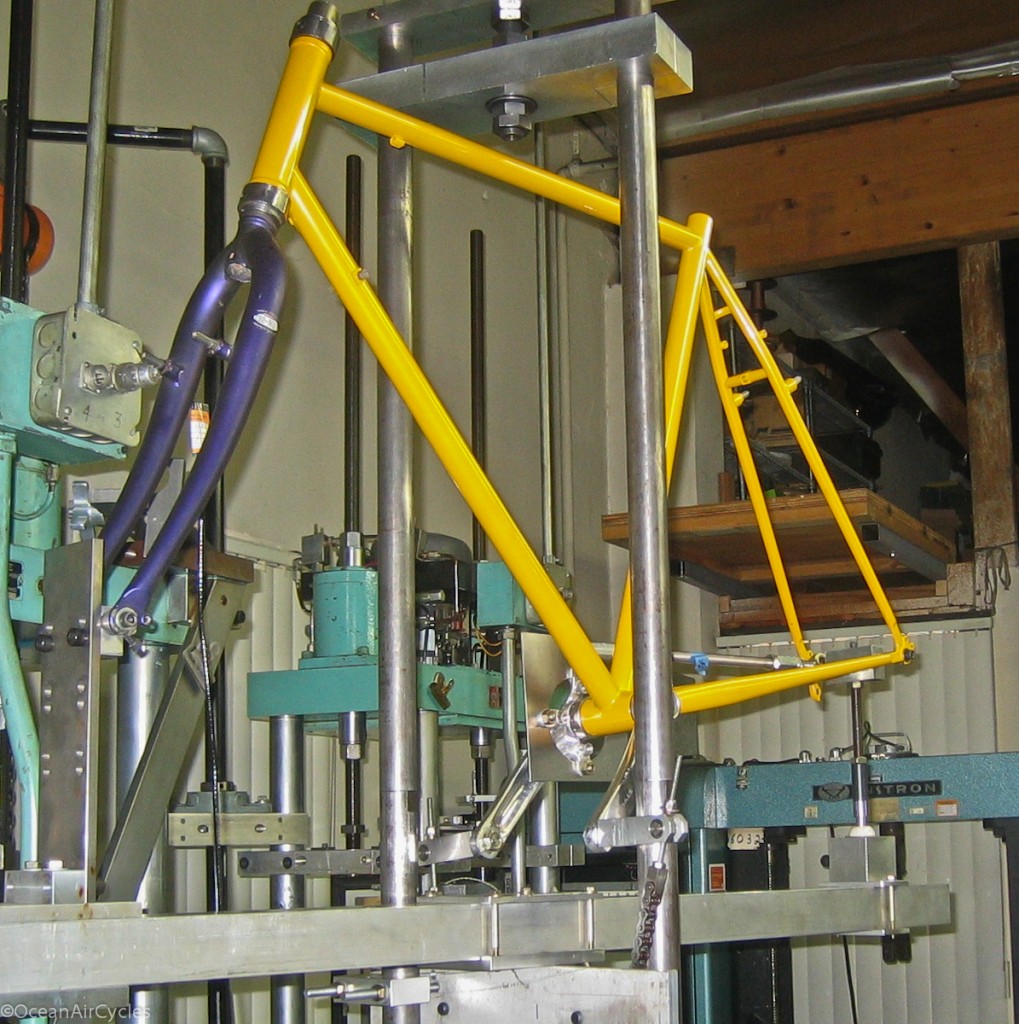Aside from the usual ride the heck out of the bike sort of testing that needs to happen, I am also enlisting the services of a lab to test the frames and forks to EN standards. This is to ensure that the designs OAC puts out there will exceed the European standards for racing and trekking bikes. These standards are more stringent than those set forth here in the US, and help to ensure that these bikes will not only function as hoped, but meet the strict minimum standards loading and fatigue. Today the pedaling fatigue tests started, and this is what the frame looks like in the testing machine.
 This test will run for about a day, and then we move on to impact and fork fatigue and impact. The lab while closer than most is still a few hours from OAC Headquarters. This makes coordination of me being there a bit of a challenge, but the goal is to be there and capture some video to share as well.
This test will run for about a day, and then we move on to impact and fork fatigue and impact. The lab while closer than most is still a few hours from OAC Headquarters. This makes coordination of me being there a bit of a challenge, but the goal is to be there and capture some video to share as well.
This kind of testing will be integrated into our ongoing QC processes as we move from testing into production. It is just part of the full program to ensure that the frame set you buy to build up into the bike of your dreams will be everything we here at OAC designed it to be. This kind of testing, while being the smart thing to do is not mandatory in the industry depending on how a company markets its frame sets. Many companies do this, I also believe many do not. Those that do seem to put it out there, brag about it, or at least mention it. It should make you, the rider, wonder what has been done to make sure your current or future bikes are what you hoped in terms of material performance.
I know I will be keeping everything as transparent as possible, so that you all out there can have confidence with any of our bikes between you and the road .
I’ll be curious how this turns out. A lot of mountain bikes seemed to have gotten heavier when they went for EN certification (Salsa, On One) I’m not sure if road bikes have a similar spec, but I hope it doesn’t detract from the “planing” characteristic of this frame.
I am as curious as any body as to how this will go. We are testing to a combination of specs for the “city/trekking” and “Racing” classifications. “Racing” actually has higher fatigue criteria. Neither really fits the Rambler exactly, but are more applicable than a MTB designation. I am fairly confident that the tubing spec is adequate. It is quite similar to Columbus SL or a Bridgeston RB1 spec, both of which have many thousands of unis still in circulation decades later.